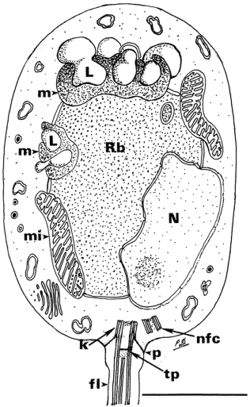Batrachochytrium dendrobatidis - The Link Between Climate Change and Amphibians
Introduction

By Scott Upton
Batrachochytrium dendrobatidis(Bd) is a pathogen primarily found in amphibians, and it’s presence can have devastating effects on amphibian populations. Bd is responsible for causing Chytridiomycosis, or chytrid, in amphibians all across the world in response to rising global temperatures (Fig 1) [1]. Bd can be found on all continents in which amphibians are present, excluding Asia, and as of 2019, Bd has been found to infect 1,015 of 1,854 species (54%) and has lead to the decline of 6.5% of all amphibian species and the extinction of 90 species [2]. Bd has been given the nickname “the doomsday fungus” in response to its incredible ability to reduce biodiversity and its ability to produce mass extinction of species. At the time, Bd is said to have led to the largest reduction of biodiversity of any species of vertebrates in the world (Fisher MC). Unfortunately, this fungus is not slowing down any time soon and its effects will continue to devastate amphibian populations as long as temperatures continue to fluctuate.
Recent studies on climate change have suggested that the frequency of temperature fluctuations will continue to rise without warning (Paul Bradley). Global climate change and its effects on infectious diseases has proven to be one of the most formidable ecological challenges in modern history. With that being said, there has been controversy over whether or not climate change and the increase in infectious diseases are directly linked without the addition of other factors. Despite controversy of the two being directly linked, the combination of climate change and infectious diseases are creating significant declines in biodiversity as well as extinction across amphibian populations. Both Bd and amphibians are sensitive to the results of climate change, but Bd is able to outperform amphibians when the performance gap between the pathogen and host is at its greatest; this can be called the thermal mismatch hypothesis (Jeremy Cohen). This hypothesis suggests that hosts who are adapted to cooler environments will be more susceptible to Chytridiomycosis in unusually warm conditions. Similarly, hosts who are adapted to warmer temperatures are more susceptible to Chytridiomycosis in unusually colder temperatures. Scientists may be able to mitigate the effects of Chytridiomycosis on amphibian populations by further studying Bd in terms of host interactions and comparing it to temperature fluctuations. With that being said, mother nature has a strange way of correcting human influence on the environment and amphibians may be able to avoid the risks Bd poses by adapting to unusual environments.
Section 1
[[Image:41579_2020_335_Fig1_HTML.png|thumb|500px|right|Fig 1. Global distribution of differnt Batrachochytrium dendrobatidis(Bd) lineages including Batrachochytrium salamandrivorans (Bsal)(Bd), another sever strain that causes Chytridiomycosis. [2]
Every point of information REQUIRES CITATION using the citation tool shown above.
Section 2
Include some current research, with at least one figure showing data.
Section 3
Include some current research, with at least one figure showing data.
Section 4
Conclusion
References
- ↑ 1.0 1.1 Berger et al. 2005. Life cycle stages of the amphibian chytrid Batrachochytrium dendrobatidis. Inter-Research. 68:52-63 Cite error: Invalid
<ref>tag; name "Berger2005" defined multiple times with different content - ↑ 2.0 2.1 Fisher, M.C., T.W.J. Garner. 2020. Chytrid fungi and global amphibian declines. Nature Reviews Microbiology. (1740-1526).
Authored for BIOL 238 Microbiology, taught by Joan Slonczewski, 2021, Kenyon College.
